For the past few months, five cheeses have been maturing in a specially-created ‘cheese cave’ at Open Cell, a biolab in West London, ready for display in the V&A’s FOOD exhibition. What’s special about these cheeses is that they have been made with bacteria harvested from the skin (armpits, toes, belly button, nostrils) of some well-known personalities. It might sound a bit gross – but bear with us! Making ‘human cheese’ is a fascinating journey into the world of microbes, from their culinary importance to the vital role they play in how our bodies work.
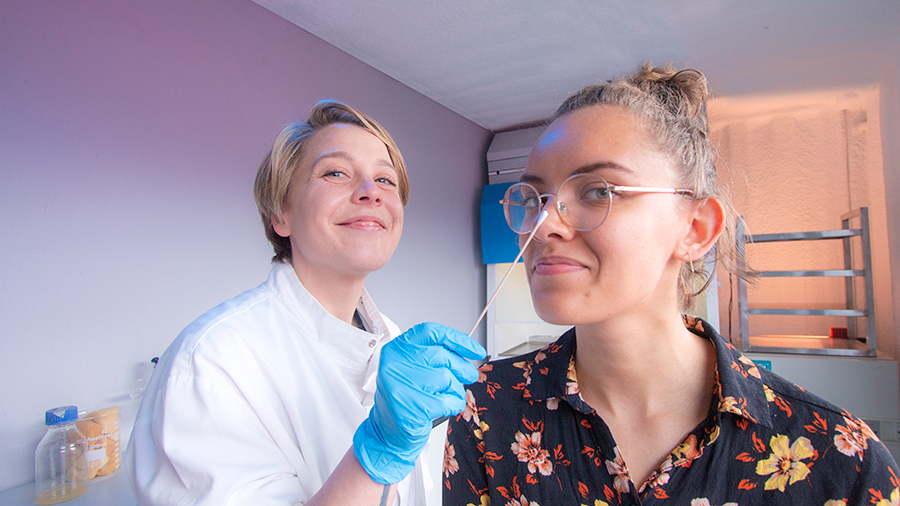
What is ‘human cheese’ and how is it made?
Many of our tastiest foods are the product of a collaboration between humans and microbes. Without these invisible helpers, there would be no beer, bread, chocolate – or cheese. Cheese is made by adding specific bacteria to milk in order to start curdling it. As the bacteria break down the emulsion of sugars, fats and proteins in the milk, the proteins start to clump together into soft curds, separating from the liquid whey. Next rennet, a cluster of stomach enzymes that helps young animals digest their mother’s milk, is added to further break down the proteins and solidify the curds. Once drained and pressed, the curds can be processed into the huge variety of cheeses found around the world.
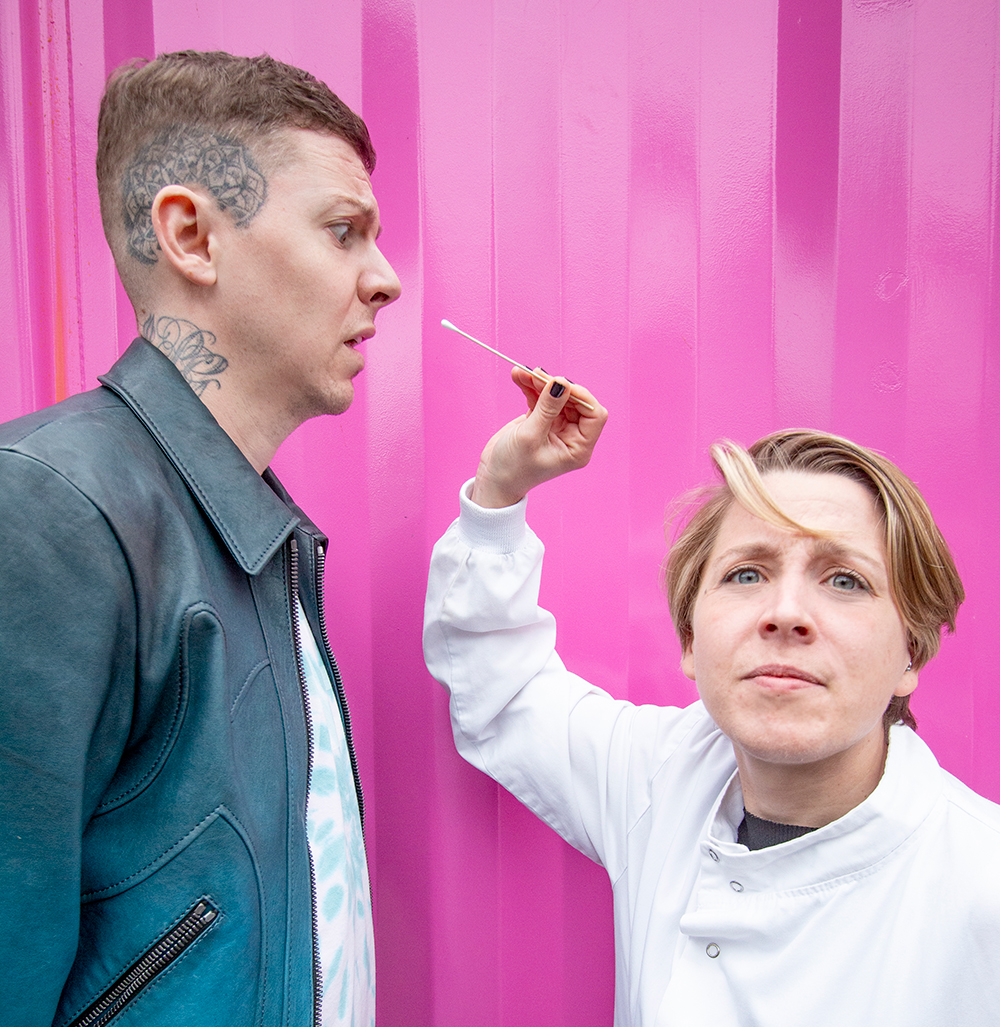
The form and flavour of different cheeses depend on the bacteria used at the beginning (the ‘starter culture’) and how the cheesemaker manages the microbial communities that grow on the cheese as it matures. Traditionally the ‘starter’ bacteria comes from the first bit of milk from the cow’s udder which meant that each cheese was unique to a particular farm and cow. Today most cheeses use more uniform commercial strains of bacteria.
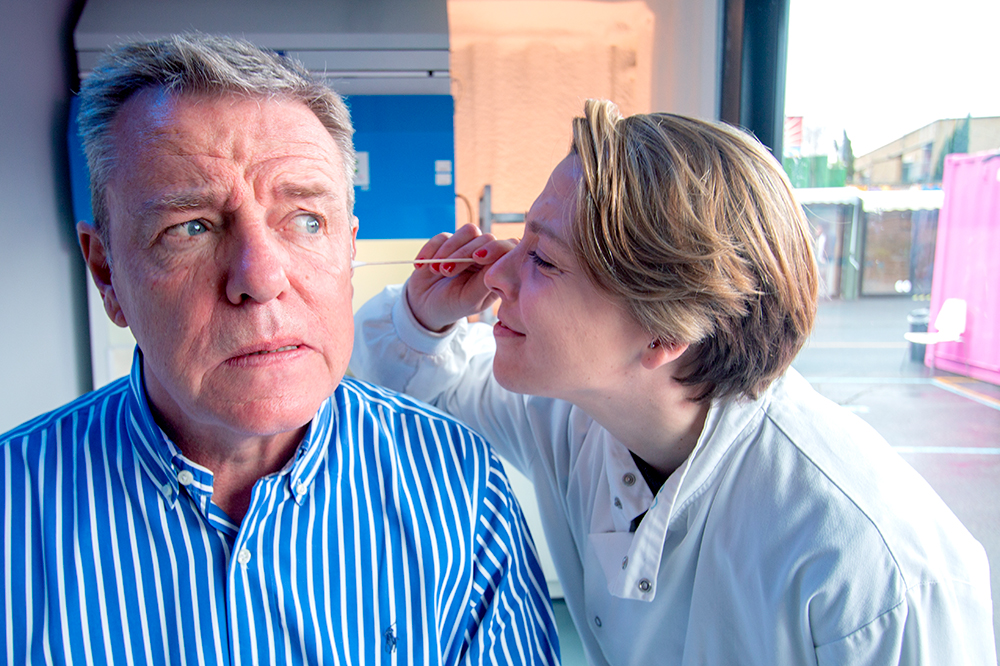
What inspired the ‘Selfmade’ project, originally conceived by Christina Agapakis (a synthetic biologist) and Sissel Tolaas (an artist who works with smell), is the fact that many of the microbes involved in cheesemaking bear a close relationship to those found on human skin. The similarities between cheese aromas and body odours are no coincidence. Whether we find these odours disgusting or delicious has a great deal to do with context and psychology. Desirable flavour notes in our favourite cheese can repel us when they are associated with the human body.
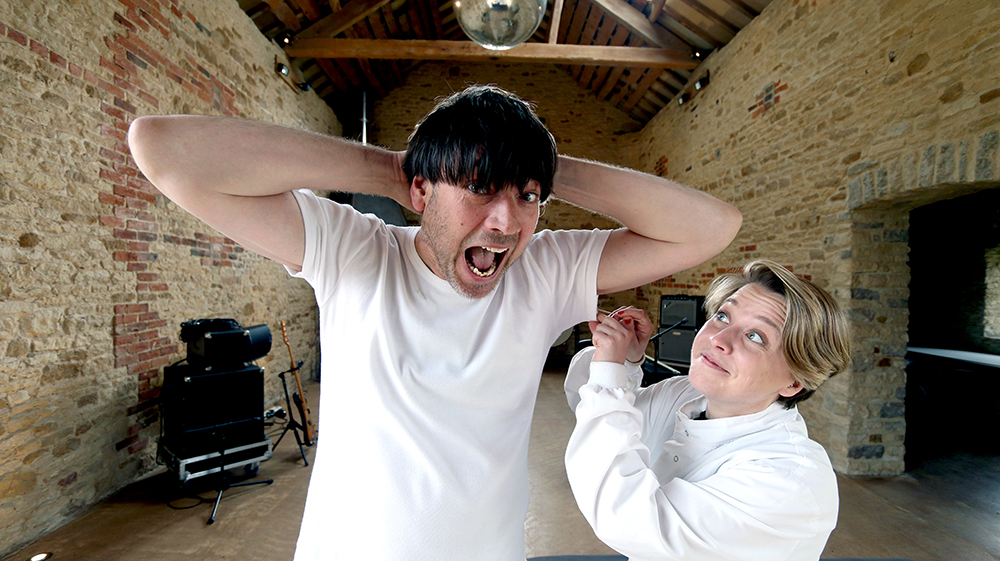
Making the ‘human cheeses’ followed the same basic process as ordinary cheese-making, except that the starter culture for each cheese was bacteria harvested from the skin of a particular individual, in this case, musician and cheesemaker Alex James (Blur), who chose to be recreated as Cheshire cheese, chef Heston Blumenthal (comté cheese), British rapper Professor Green (mozzarella), baker and food writer Ruby Tandoh (stilton), and Madness frontman Suggs (cheddar). Starting with a skin swab, the bacteria was grown in the lab until there was enough to make the cheese, and in order to analyse which kinds of bacteria were growing. Once fully matured, each cheese will be a unique microbial portrait of the donor (while you are 99.9% identical to the person sitting next to you in terms of DNA, this is not true of your microbes, you might only share 10% similarity) – like a celebrity selfie in cheese form!
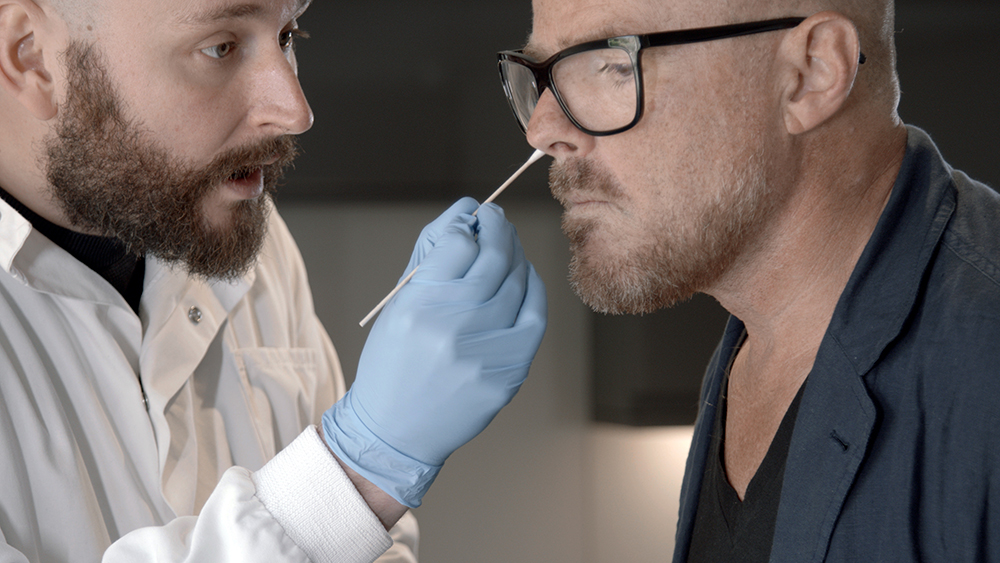
Why do it?
Aside from proving that the microbes inhabiting our skin can do a good job of making cheese, what can we learn from doing it? The answer lies in challenging our squeamishness and enhancing our appreciation of the microbial world.
When scientists first saw microbes under the microscope in the 19th century, they realised that some of them were the cause of human illness. Processes for killing bacteria such as the pasteurisation of food and the sterilisation of medical instruments have prevented illness and saved countless human lives. But along with the bad bacteria, we routinely destroy many that may be crucial to our wellbeing.
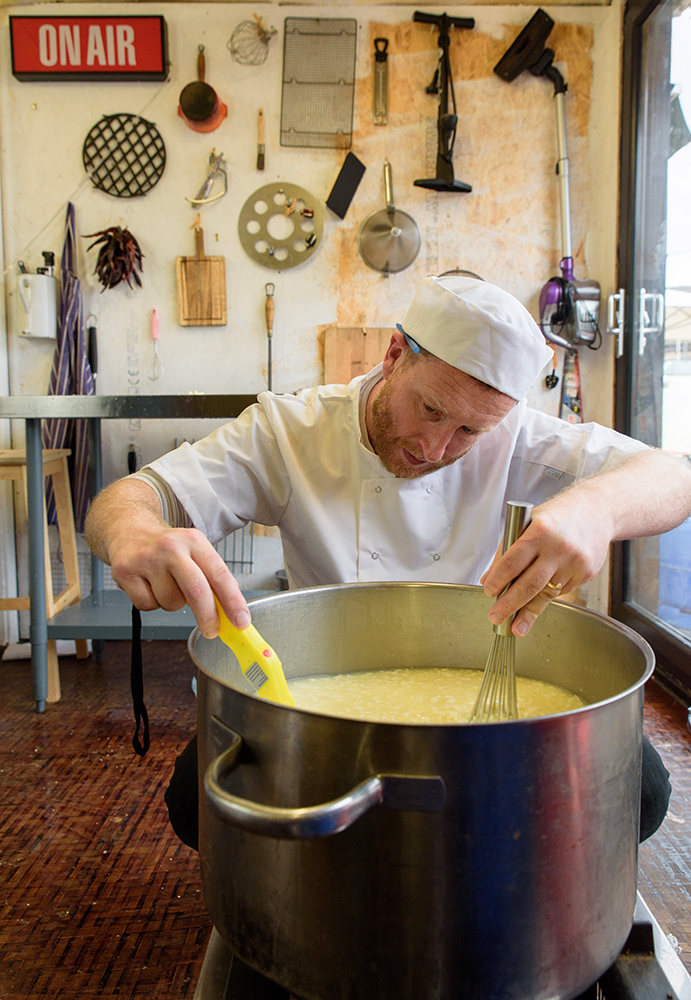
Our bodies are teaming with microbes. We have ten times as many microbial cells as human ones. They interact with each other, performing different roles, helping to form us, feed us and protect us. It is now thought that the composition of our microbiome may even affect our mood, weight, intelligence and personality. And as scientists develop new techniques for studying microbes, the popular assumption that they are only a source of harm or embarrassment (unwanted smells) is giving way to a much more complex understanding of the extraordinary things they do for us.
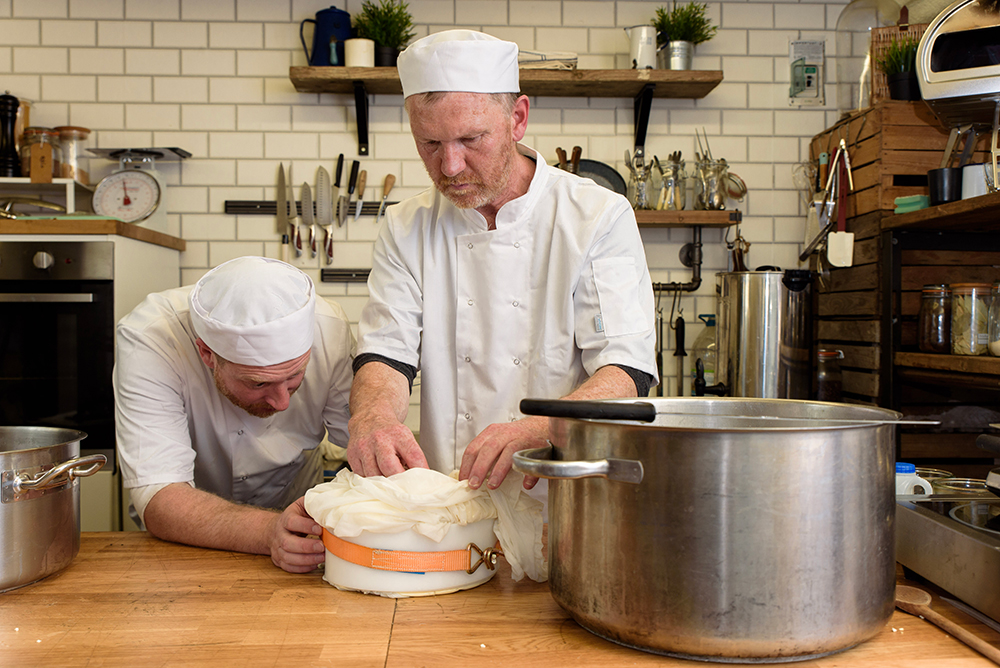
In the FOOD exhibition, our human cheeses feature as artworks, making the invisible visible and challenging us to reconsider our feelings of disgust, as bacteria cross boundaries between our bodies, our environment and our food. Experimenting with cheese also has the potential to further scientific understanding. Microbes work in communities and aren’t suited to being isolated in the laboratory. Studying microbes on cheese can provide scientists with clues about how they work together in the much more complex environment of the skin.
So, is it edible?
The cheeses are being sequenced in the lab to find out exactly what species of bacteria they contain and whether they are edible in terms of food safety. Our skin is home to millions of bacteria, fungi and viruses that compose the skin microbiota, similar to those in our gut. The challenge is to identify the good bacteria and to eliminate the bad in order to get a cheese that hosts the right microbes to make it edible and tasty.
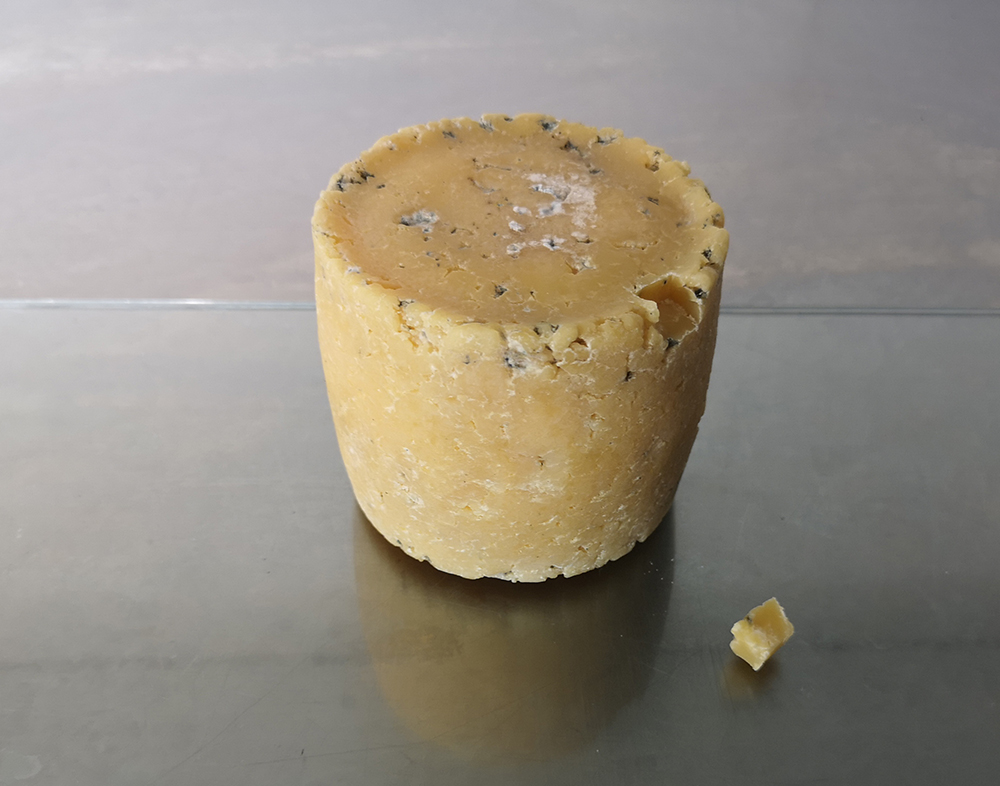
If they do turn out to be fit for consumption, would you be tempted to have a nibble?
FOOD: Bigger than the Plate brings together creative ideas for a food future that is more biodiverse, just and delicious than the one we are currently cultivating. Getting to know our microbes better through cheese-making both celebrates bold flavours and reminds us of our interdependence with other species. Eating with your microbiome in mind may become common practice in the future.
The human cheese project was conceived by Christina Agapakis and Sissal Tolaas for Synthetic Aesthetics. This version has been realised for the V&A by Open Cell, an open research centre that aims to make biotechnology more accessible and inclusive of other disciplines including art and design. Their work addresses the impact of biotechnology on our lives – from the food we eat, to the clothes we wear to the buildings we live in – and explores how it could be used to create more sustainable forms of production and living.
Follow the Food Busker on YouTube to find out more about the project.


